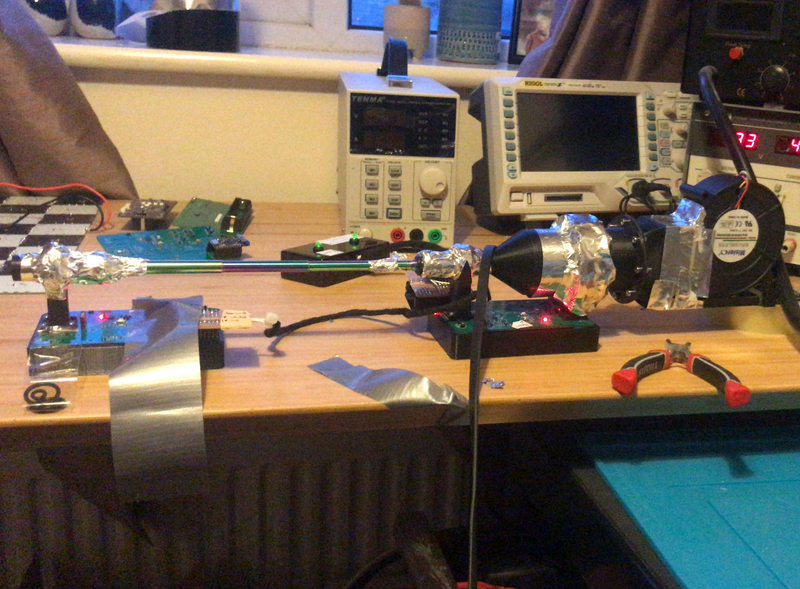The Science of Straw Singing
What is SOVT?
Straw Singing / Straw Phonation is a type of Semi-Occluded Vocal Tract Intervention (SOVT). When we sing through a straw, we prevent the normal outflow of air and acoustic energy, as a result, only some of this energy is able leave the body. The rest gets trapped in the oral cavity, where it begins to build in pressure just behind the cheeks and lips, whilst simultaneously propagating backward down the vocal tract, toward the top of the vocal folds where it gets recycled back into the system to help you more efficiently make sounds. This process is more commonly referred to as ‘back-pressure’.Let's take a deeper look...
Research
Academic research has shown that SOVT exercises create a balance between subglottal and supraglottal pressures, which helps optimize vocal fold vibration. Studies indicate that these exercises can:
- Reduce phonation threshold pressure, making phonation easier.
- Improve vocal economy, allowing singers to produce sound with less effort.
- Decrease vocal fold collision forces, reducing strain and potential vocal damage.
- Enhance resonance and projection without forcing the voice.
A 2006 study by Ingo Titze found that phonating through a narrow tube increases intraoral pressure, helping to stabilize the vocal folds and encourage efficient vocal fold oscillation. This means that using the right level of resistance in straw phonation can significantly impact vocal training and therapy outcomes.
Overview of Straw Phonation
SOVT exercises help with creating sufficient airflow as well as helping to check that the voice isn't being overworked. More importantly, SOVT is gentle enough to be used as a way of warming up the voice for singing, warming down the voice after singing, and everywhere in between - these exercises can also be used as a 'reset' button. In addition, SOVT can be used to help ease tired and fatigued vocal folds, as the exercise works to minimise the vocal fold collisions by providing a protective 'air cushion'.
When used with our specialised singing straw, you create an elongation of the vocal tract too, essentially lengthening it by the protruding distance of the device from the mouth. This helps to reposition (up or down) and stabilise your voice 'break', making higher pitches more easily accessible.
All of these incredible benefits of SOVT make it SO much easier for you to use your voice. Plus, it also teaches your brain and body to work in harmony, encouraging even more efficiency.
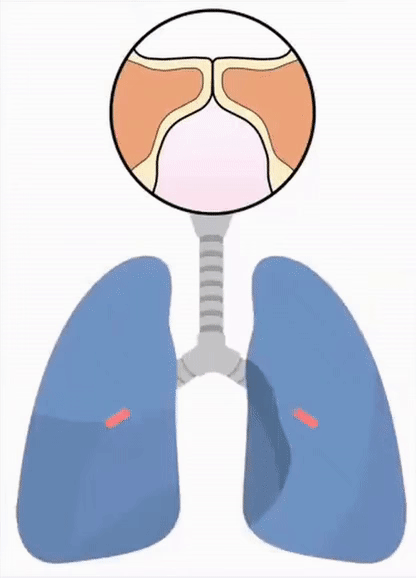
Overview of Back Pressure
Back-pressure is a key concept in straw phonation exercises. It refers to the increased air pressure that builds up in the vocal tract when singing or vocalising through a straw. Back-pressure provides some important benefits to the voice user, allowing for an overall more efficient sound production process by...
1 - Sending 'positive' pressures back down the vocal tract to counter and balance the other pressures coming from the lungs. This provides a 'cushioning' later preventing harsh collision forces - basically, it FEELS easier to sing!
2 - Lowering phonation threshold pressure (PTP), which basically means your vocal folds have to do less work to resist the buildup of pressure coming from the lungs. This allows the vocal folds to more easily be set into motion!
3 - Entraining the vocal folds to sustain their movement and oscillation with ease once PTP has been achieved.
4 - Aligning the vocal folds more aerodynamically, which means that they're more complimentary to the airflow.
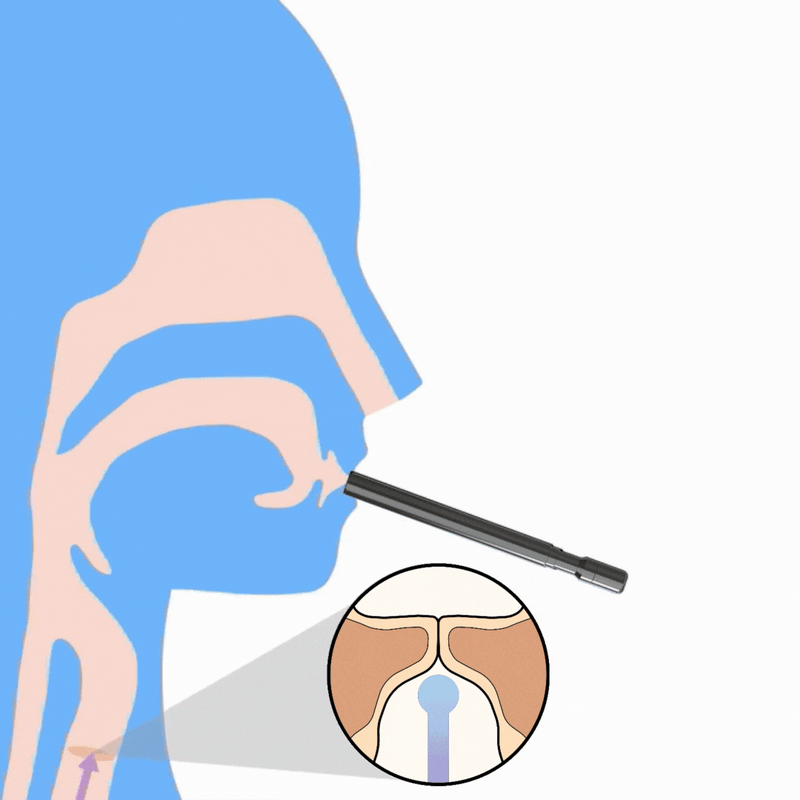
One Straw Size Does Not Fit All
As you might've guessed from the above, it is impossible to apply a fixed sized straw or tube to every voice and expect the same benefits.
Individual Differences
Task Dependent
AC/ DC
Flow Rate
Vocal Fatigue
Change In Pitch
Highlights From The Literature
Kang et al., 2019
Costa et al., 2011
iSingMag, 2016.
Research Papers
Intraoral Pressures Produced By 13 SOVT Gestures
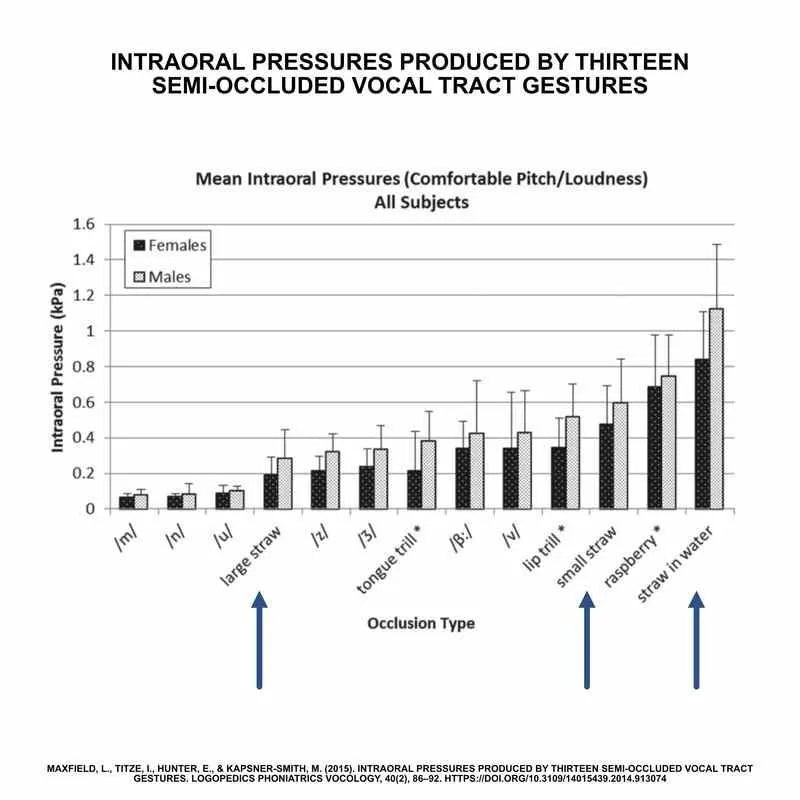
In a study by Maxfield et al (2014), intraoral pressures were explored across 13 different SOVT tasks. The aim was to compare these SOVT gestures, which in turn might inform how user might select a particular SOVT gesture to suit. The table to the left shows the mean intraoral pressures associated with these 13 gestures, when performed on a comfortable pitch/loudness. The most important take-away points are:
- The darker bar represents females, whilst the lighter grey represents males. As expected, the intraoral pressure within the female participants was lower than males when using exactly the same SOVT mechanism. Why is this important? It shows that a single universal straw/tube will not be suitable for all users, as males and females will require different lengths/apertures in order to equalise the pressure difference between gender.
- The extra black lines rising from the columns indicates "standard deviation" - basically, this represents how individual differences can affect the results. In this instance, the individual differences of lung pressure account for this factor - which is another key point to highlight... EVERYONE IS UNIQUE! The only solution is for a variable resistance device that users can hone in for their own unique individual voices.
Characterisation of Flow-Resistant Tubes Used For SOVT Voice Training & Therapy
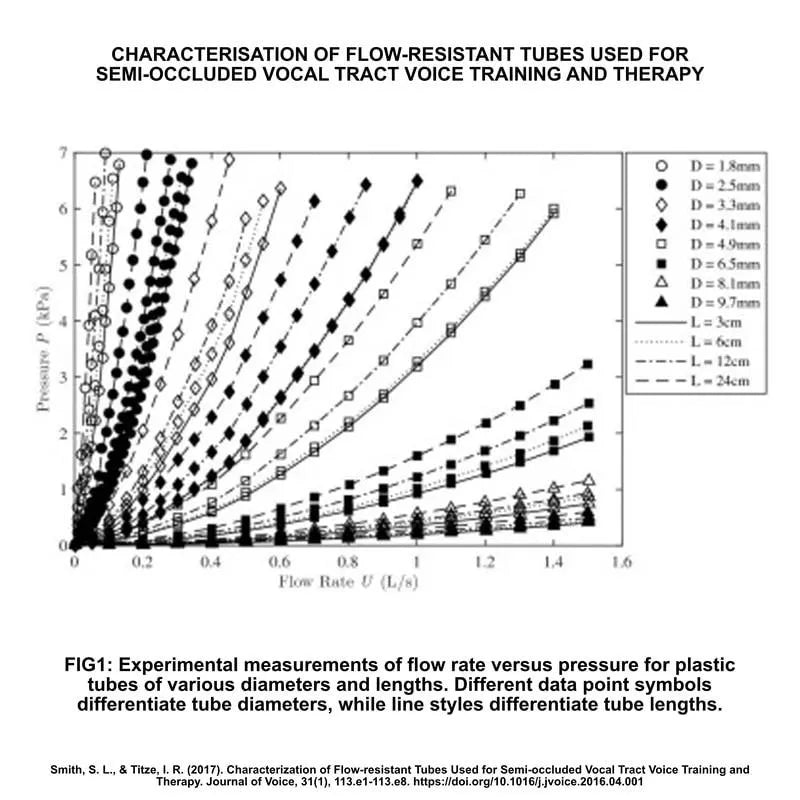
And finally... STRAWS! Maxfield at el. looked at three different types of straws, noted below and ranked in order of least resistance to most resistance:
- Large Straw (6mm internal diameter, 195mm length)
- Small Straw (3.5mm internal diameter, 141mm length)
- Straw In Water (5mm internal diameter, 360mm length, 70mm depth in water)
Further complimenting this, Smith and Titze, in a 2017 study, explored the categorisation of flow-resistant tubes used for SOVT training and therapy. Their work identified that a reduction in the diameter of a tube by half (5mm to 2.5mm) will increase the resistance factor between 4-10 times, depending on the length of the tube and the airflow rate. Additionally, Smith & Titze state that an increase in the length of the tube will also increase the resistance.
We now have somewhat of a framework to build from here. Outside of water, it's clear that a narrower diameter straw provides a greater resistance than a wider one. This makes sense, especially in consideration of the principles of fluid dynamics.
Variation On Vocal Economy After Different SOVT Exercises In Subjects With Normal Voice & Dysphonia
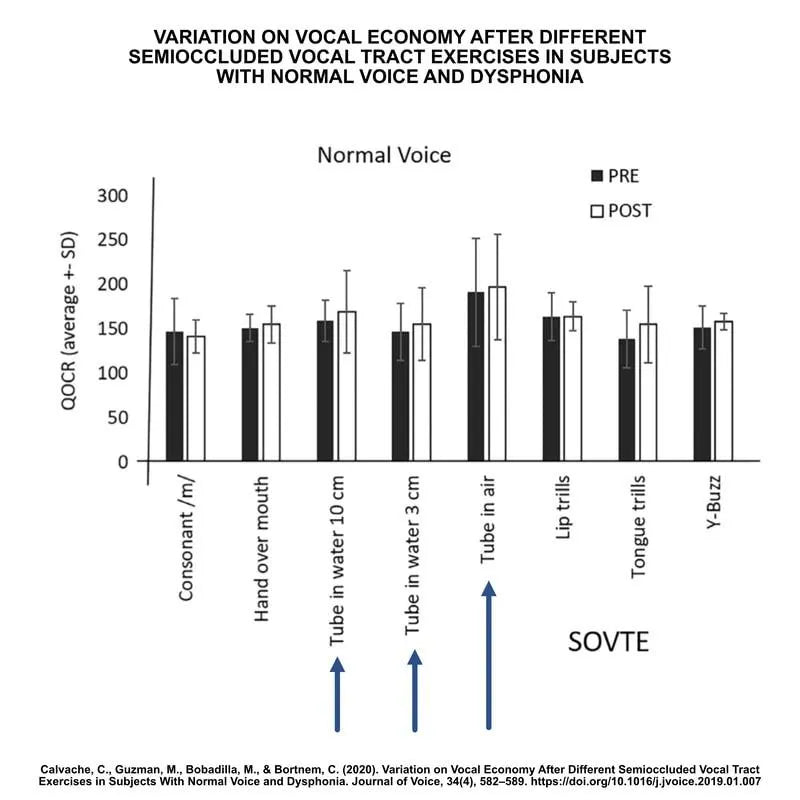
So, if you want a more athletic resistance styled workout, then a narrower diameter is going to offer the most benefits. For a more therapeutic workout, or if you want to ease tired and fatigued vocal folds, the larger diameter is clearly the winner.
If you then want to double down on the native mechanical resistive properties of your straw, then you can combine it with water and use the weight of the fluid to determine the additional resistance.
In a study by Calvache et al. (2019), the effects of a 5mm diameter straw (258mm length) were studied in relation to vocal economy. They define ‘vocal economy’ as the maximum output with least amount of stress on the vocal folds. The study explored different depths of this 5mm straw within water, starting at 30mm depth, then 100mm depth, as well as just having the straw exposed to air.
Calvache et al. found that there were improvements in vocal economy across all straw configurations - lending support to our SOVT Straw design, with the 5mm straw submerged in 100mm of water coming out on top as the most efficacious for promoting vocal efficiency. This is another reason why we designed our SOVT Straw to be variable in resistance, as you can always choose your preferred "value" no matter if you're training with/without water.
Straw Size & Resistance
An important consideration in straw phonation is the diameter and length of the straw or tube used, as this impacts the degree of flow resistance. Titze et al. (2002) examined various straw sizes and found that smaller diameter straws (2.5-3 mm) created greater flow resistance and intraoral pressure compared to larger straws (6-7 mm). They suggested smaller straws may be beneficial for developing breath support, while larger straws allow for more comfortable sustained phonation.
Smith and Titze (2017) conducted a comprehensive study characterizing the flow resistance of tubes commonly used in SOVT training. They found that resistance increased as tube diameter decreased and length increased. Notably, they observed that diameter had a much stronger effect on resistance than length. For example, decreasing diameter from 5 mm to 2.5 mm increased resistance by over 700%, while doubling tube length only increased resistance by about 50%.
Maxfield et al. (2015) measured intraoral pressures produced by 13 different semi-occluded gestures. They found thin stirring straws (2.5 mm) produced the highest pressures, followed by lip trills and wider drinking straws (6 mm). Nasal consonants like /m/ produced the lowest pressures. The authors suggested straw exercises may provide more consistent pressures across individuals compared to lip trills, which can vary based on lip tension.
da Silva et al. (2018) developed an analytical model relating flow resistance to tube geometry. Their analysis confirmed that resistance is much more sensitive to diameter than length. They created an isometric resistance chart allowing clinicians to determine equivalent tube dimensions to achieve similar resistance. This provides a useful tool for tailoring straw phonation exercises.
Scientific Claims You Can Trust
We are currently conducting our own research into the efficacy of SOVT devices, with particular interest in understanding how airflow (velocity and pressure) move through the straws/tubes. At present, we are working to build three types of experiments in order to empirically validate the efficacy of our SOVT Straw, which will in turn allow us to confirm the range of resistances the user experiences across these 12 configurations.
CFD Simulations
Our first experiment is to use Computational Fluid Dynamics in order to simulate the flow of air through our device. We’re using this to set the “perfect world” baseline for our experiments.
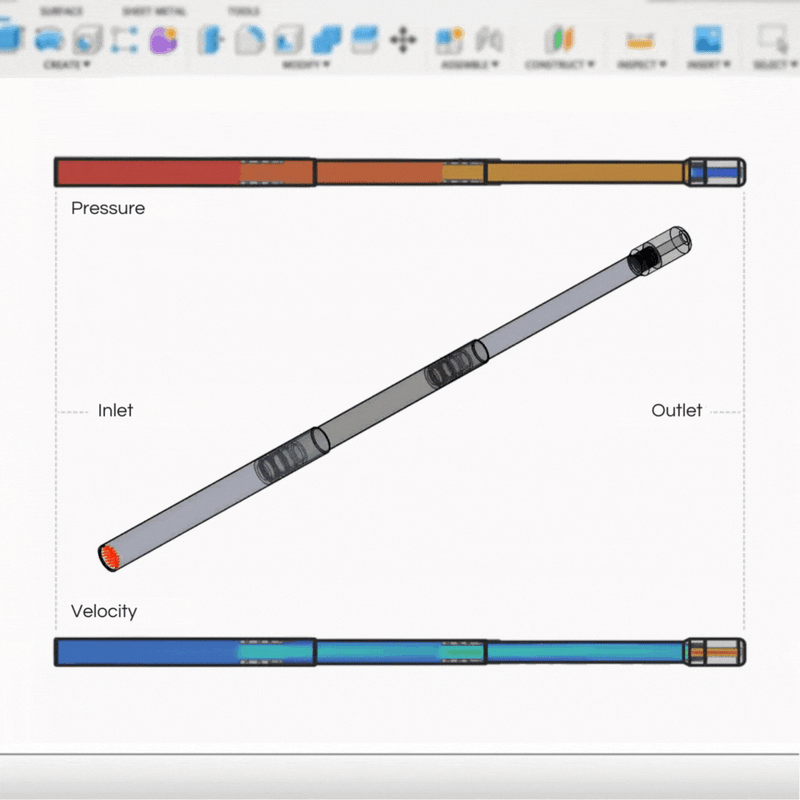
Mathematical Modelling
We've also build a full mathematical model, taking into account the complexity of the physics and theory of Straw Phonation. The model will allow us to calculate the back-pressure of ANY straw configuration.
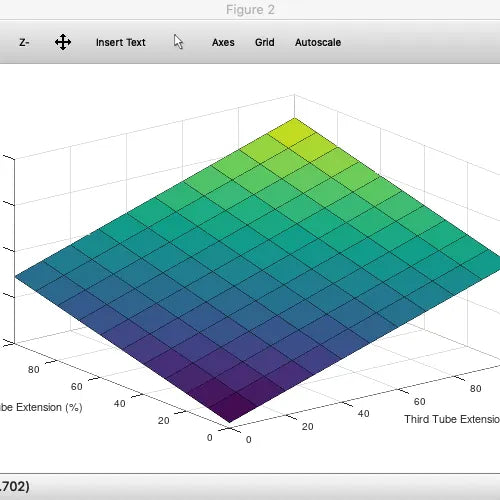
Hardware Validation
Finally, we’ve designed and 3D printed a physical rig that’ll allow us to flow air through our Resono, allowing us to measure resistance offered across any number of vocal tasks in the 'real world'.
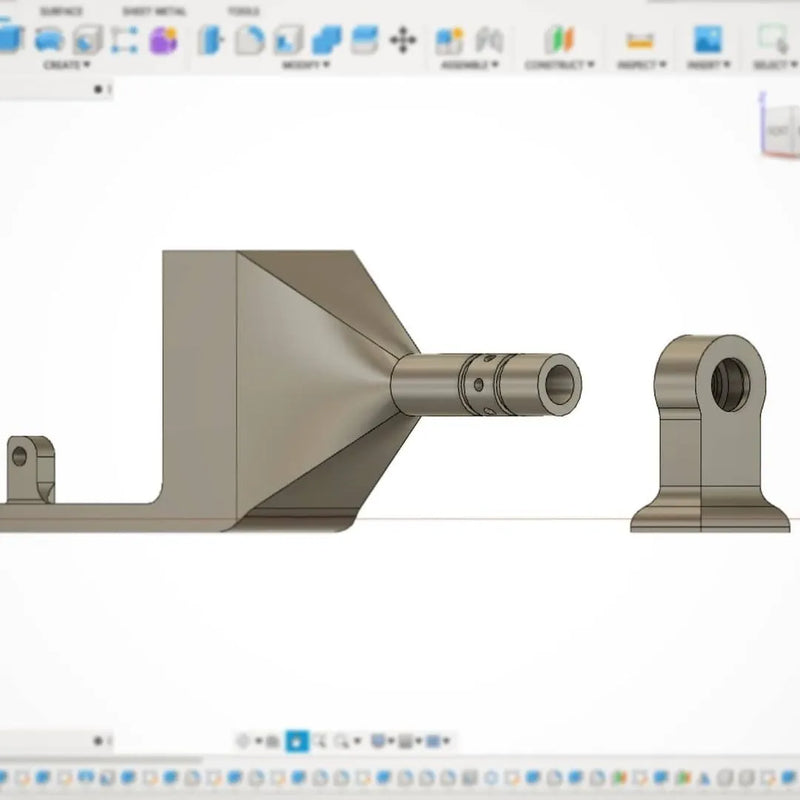
Hardware Validation Cont.
One of the coolest rigs we made was a real-world simulation of airflow through any type of singing straw / voice straw / vocal tube / SOVT Straw. It used a small fan, which was connected to a variety of custom 3D printed housings, each containing custom PCBs, sensors, and software. The idea was to measure the pressure drop across the straw at any given flow rate. The entire rig could also be operated by a person phonating into it (as opposed to via the fan), allowing for data collection in settings akin to how the devices would be used in practice.
